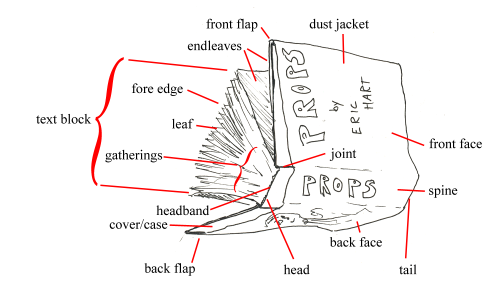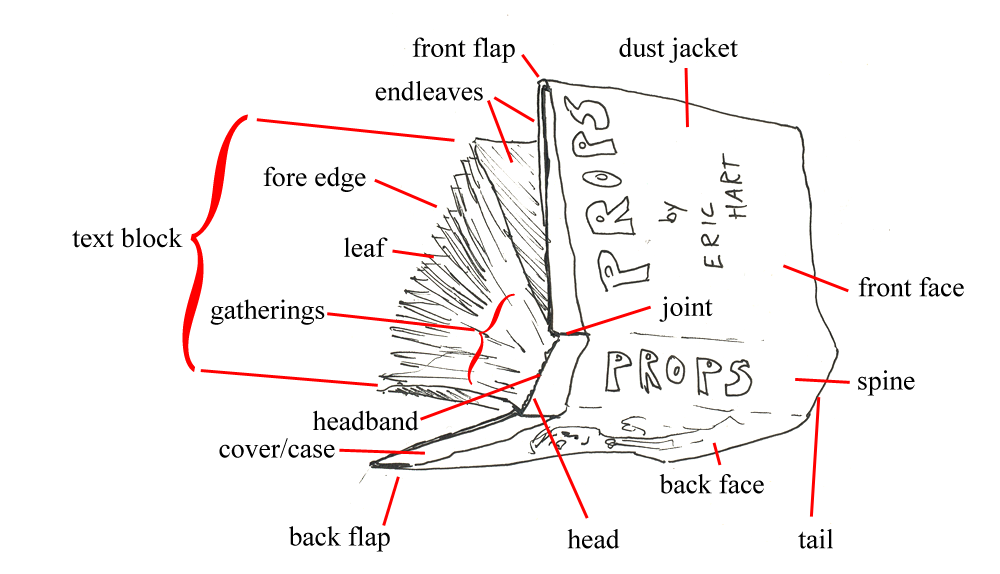For long-term fans of my blog, you may have picked up that I am working on a book about props. It will be an expanded treatment of the paper I presented at the SETC Symposium in 2009, essentially setting forth a “scientific method” to approach the construction of any type of prop. It’s going to be a lot more fun than that sounds. To get in the spirit of things, here is a diagram and definitions of the various parts of a book.

- text block – Everything between the covers.
- front flap – The section of the dust jacket on the front of the book which is folded so it sits inside the cover.
- endleaves – Two or more leaves at the front and back between the cover and the text block.
- fore edge – The side of the book opposite the spine.
- leaf – A single sheet of paper is a leaf, and each side is a page. The front page is known as the Obverse or Recto, while the back page is the Reverse or Verso.
- gatherings – A group of leaves formed by folding a single sheet of paper. The text block is made of a series of gatherings.
- headband – The narrow cloth band on the top and bottom of the spine. In hand-sewn books, it is functional and adds strength, in machine-bound books it is decorative.
- cover/case – Whatever covers the text block. It consists of the cover panels and cover spine.
- back flap – Like the front flap, but in the back.
- dust jacket – Books used to have these to protect the covers. Of course that was before they had dust repellent paper.
- front face – The front section of the dust jacket. The portion of the cover underneath is the front cover panel.
- joint – Where the cover panels meet the cover spine.
- spine – The back part of the cover where the text block is attached. It’s what you see when books are on a bookcase.
- back face – The back section of the dust jacket. The portion of the cover underneath is the back cover panel.
- head – The top of the book
- tail – The bottom of the book





